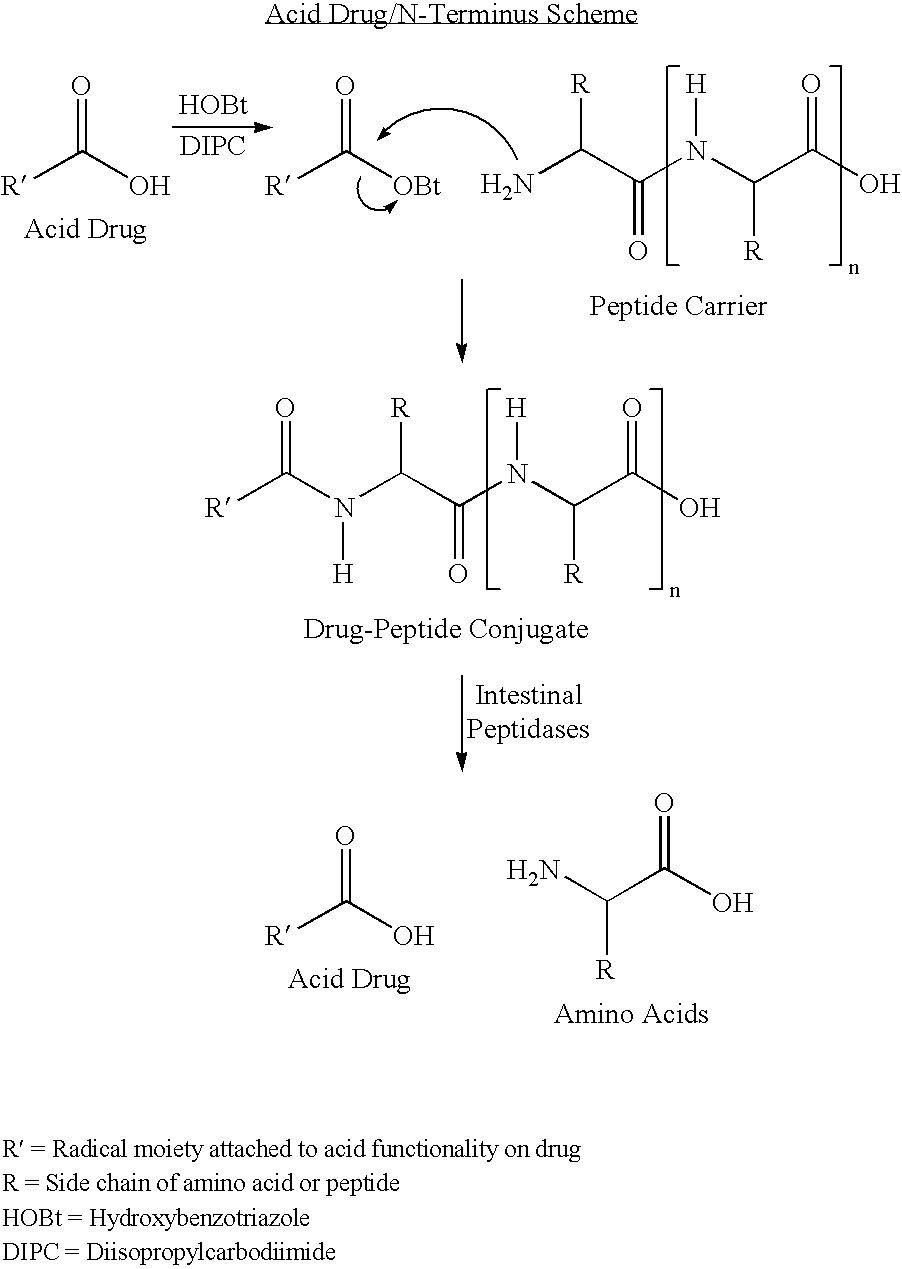Active agent delivery systems and methods for protecting and administering active agents
a technology of active agents and delivery systems, applied in the direction of powder delivery, peptides, dipeptide ingredients, etc., can solve the problems of difficult optimization of these properties without losing therapeutic efficacy, poor absorption of drugs, and not all of them have pharmacokinetic properties
- Summary
- Abstract
- Description
- Claims
- Application Information
AI Technical Summary
Problems solved by technology
Method used
Image
Examples
Embodiment Construction
:J is further illustrative of the conversion of one of the naturally occurring amino acids, in this case Glu, to a glutamic acid derivative which can be further incorporated into a linear or dendritic peptide either through the NCA method or through the use of a peptide synthesizer. Examples III:K-III:N show a carboxylic acid attached to the side chain of an amino acid. In the present examples, the active agent is attached to Polylysine through the amino group. Example III:O is describes a sulfonamide attached to the side-chain of a Polyglutamic acid.
[0193] Specific examples of active agent attached to the side-chain attachment below are meant for example purposes only and are not meant to limit the invention to either specific active agents, amino acids or combinations thereof. Those skilled in the art would recognize from the present disclosure other active agents, which can be attached to the side-chain of a peptide.
[0194] III:A--Attachment of an Active Agent via an Alcohol Group...
PUM
| Property | Measurement | Unit |
|---|---|---|
| Mass | aaaaa | aaaaa |
| Mass | aaaaa | aaaaa |
| Mass | aaaaa | aaaaa |
Abstract
Description
Claims
Application Information
 Login to View More
Login to View More - R&D
- Intellectual Property
- Life Sciences
- Materials
- Tech Scout
- Unparalleled Data Quality
- Higher Quality Content
- 60% Fewer Hallucinations
Browse by: Latest US Patents, China's latest patents, Technical Efficacy Thesaurus, Application Domain, Technology Topic, Popular Technical Reports.
© 2025 PatSnap. All rights reserved.Legal|Privacy policy|Modern Slavery Act Transparency Statement|Sitemap|About US| Contact US: help@patsnap.com



